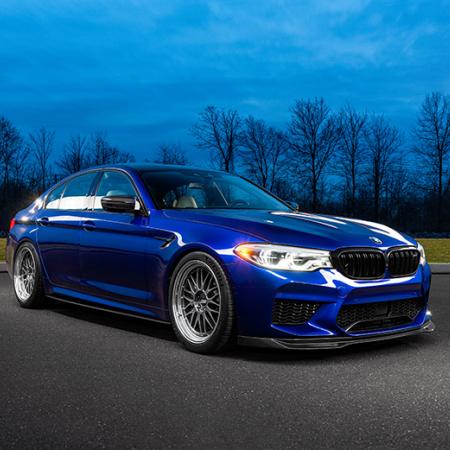 To say that I am a fan of the 3 Series would be a bit of an understatement. In my thirteen years of BMWs, I have owned five of the venerable 3 Series—counting our current 4 Series—in all shapes available except the convertible or GT. It’s a car that, for me, has always delivered on a core group of traits expected of BMW: athleticism, style, and luxury.
To say that I am a fan of the 3 Series would be a bit of an understatement. In my thirteen years of BMWs, I have owned five of the venerable 3 Series—counting our current 4 Series—in all shapes available except the convertible or GT. It’s a car that, for me, has always delivered on a core group of traits expected of BMW: athleticism, style, and luxury.
With each successive generation, the Three has become more popular, more prominent in the BMW lineup, and more prolific in office and mall parking lots across the world. BMW has accomplished this dominance in the sport-sedan segment by delivering a resoundingly good product—and, in part, with the advent of the $300-a-month lease payment, thereby opening up previously exclusive vehicles to a broader audience.
But with that broader audience comes a new perspective on what a 3 Series must do.
In 2014, BMW sold just over 480,000 3 Series vehicles worldwide. Despite my hopes, many of those buyers aren’t the hardcore Ultimate Driving Machine-seeking enthusiasts who bemoan the evolution of the compact sport sedan into cushy office parking lot jewelry. Therein lies the challenge the 3 Series must face—a challenge BMW has created for itself.
BMW effectively created the niche of the sport sedan in the late 1960s with the Neue Klasse 1500 and the succeeding 1602 and 2002 models; the 3 Series name for the range began in the mid-1970s with the E21 body code, and the 3 Series has been wildly successful over the last 40 years. During that time, the 3 Series has come to symbolize many things for the brand, from luxury and sportiness to the “starter” BMW for many buyers, to success in motorsports. In those short 40 years, BMW AG hasn’t rested on its laurels for numerous reasons, most notably the fierce competition it has sparked in the last four decades from three continents.
Such is BMW’s success in the sport-sedan segment that Mercedes-Benz, Audi, Infiniti, Lexus, Acura, Volvo, and Cadillac have all brought a cavalcade of challengers, each with its own unique approach to steal away those loyal to the king. An Audi A4 may have a slightly better interior; a Cadillac may sport magnetic ride control; but none of them has yet to topple the Three as a complete package.
However, this competition has required the 3 Series to become the automotive equivalent of a Swiss Army knife; it must be a jack of all trades to stay competitive with each new generation from the competition, moving the goalpost farther out. How do you retain the Ultimate Driving Machine when you’re juggling so many diverging priorities?
It’s a challenge that I do not envy, but one I feel confident the Bavarians will continue to meet head-on; they’ve done so for the last 40 years.
Some argue that the current-generation 3 Series has finally gone a bit soft, something I will concede, if only because of the light steering controls that make my E91 feel as though it lacks power steering. However, with that small compromise comes a world of technology at the fingertips of the driver in a car that continues to redefine handling for its segment. At its press launch, I watched two BMW factory drivers duke it out, one in an E92 M3 Competition Package, the other in a F30 335i Sport Line. They ran laps around Laguna Seca with the M3 not gaining any distance on the 335i—one generation newer and a massive leap in outright performance.
When you look at everything that 3 Series engineers and designers must get right—all while maintaining 40 years of sporting legacy against increasingly stiff competition—it’s amazing that BMW hasn’t yet turned a wheel wrong with its most popular model. Perhaps, then, the Ultimate Driving Machine still exists today—albeit a different definition of what we should expect from it, because there are so many buyers who expect something from it. Comfort versus sportiness, technology versus analog inputs—these are some of the many dichotomies BMW navigates across its model range, though no car better embodies all of these priorities than the 3 Series.
And remember, every buyer may have a different definition of ultimate.—Andrew Murphy









